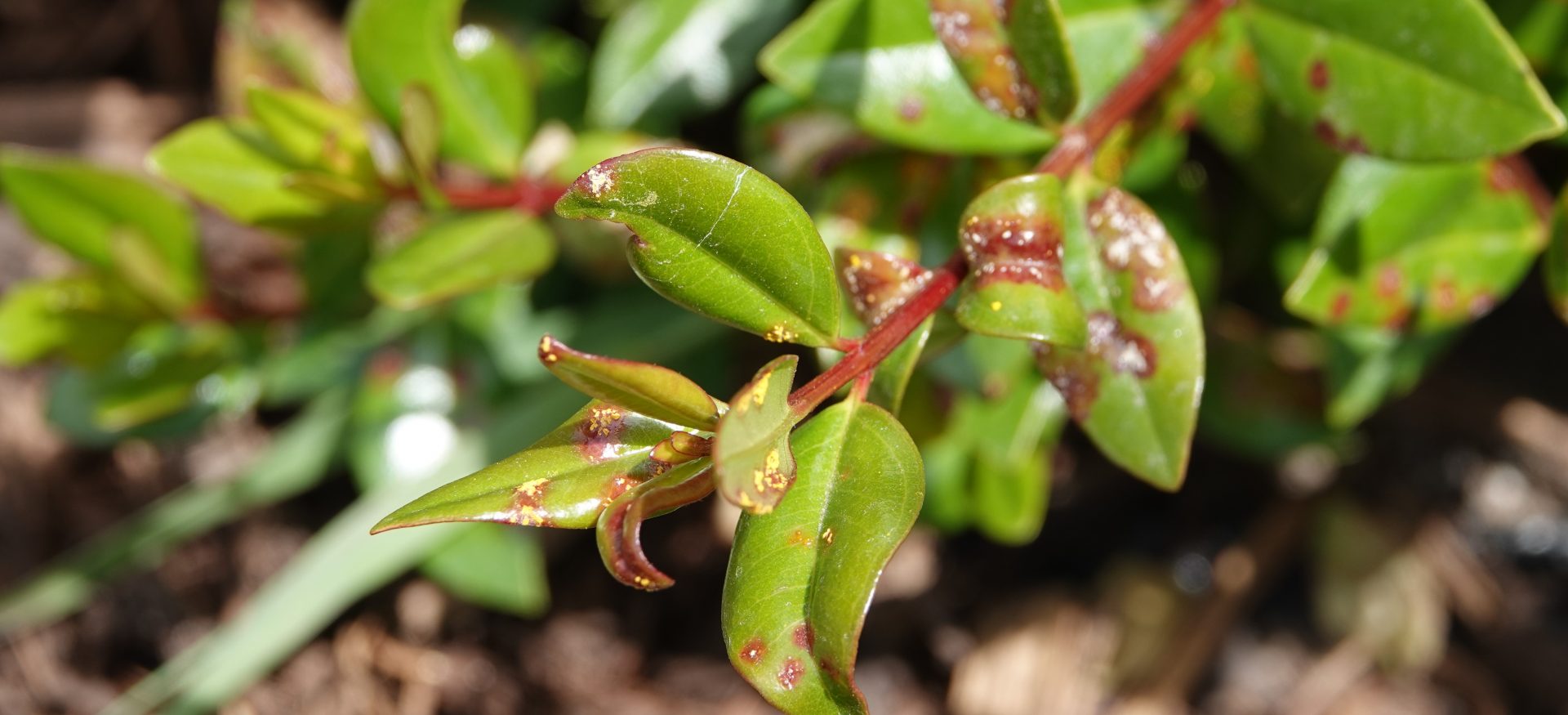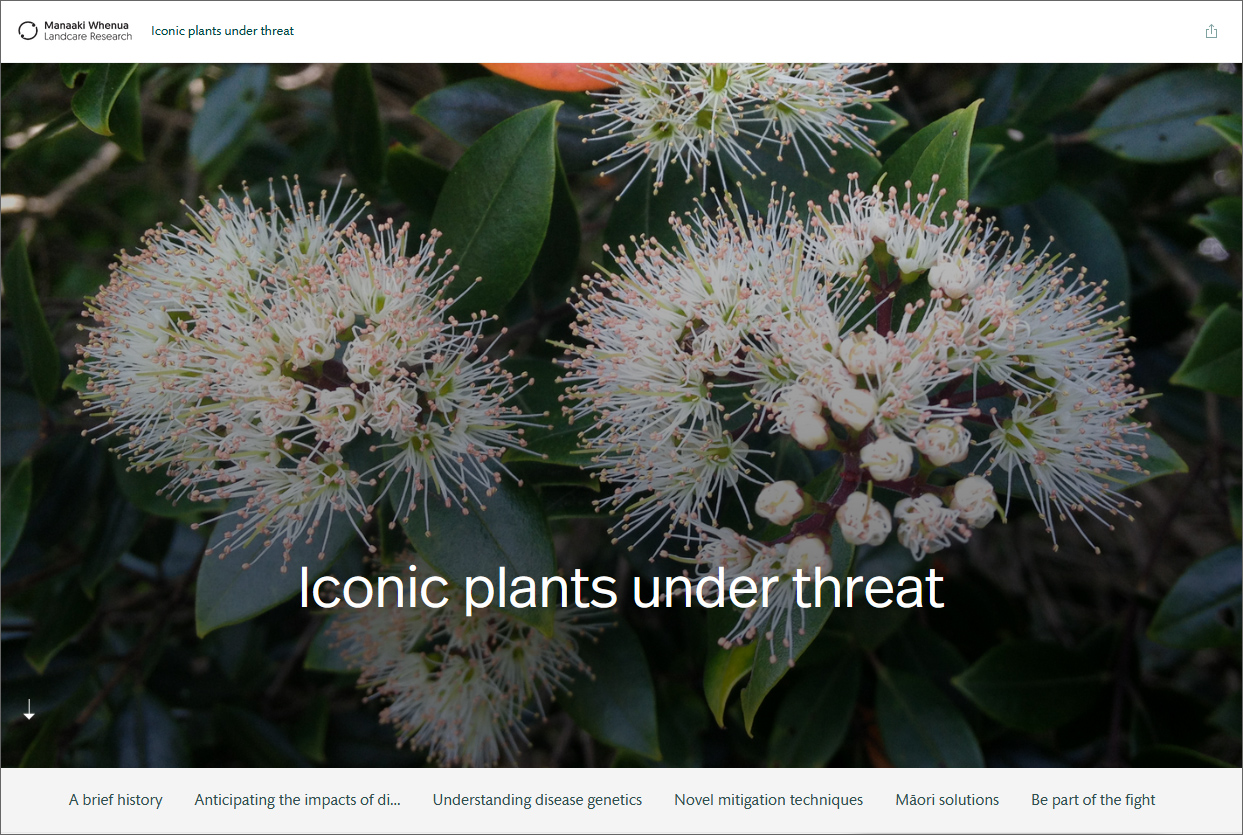A suite of tools and information to help plant nurseries manage myrtle rust outbreaks this summer has been released by New Zealand Plant Producers Inc (NZPPI).
The value of collaboration: four questions for four myrtle rust experts
Ngā Rākau Taketake (NRT) and Beyond Myrtle Rust (BMR) are partners in tackling myrtle rust. We spoke with Beccy Ganley and Nick Waipara (Rongowhakaata and Ngāti Ruapani ki Tūranga) from NRT and Mahajabeen Padamsee and Renee Johansen from BMR about their thoughts on the value of this collaboration.
Exploring the molecular basis of myrtle rust
Austropuccinia psidii, the fungal pathogen that causes myrtle rust, has a large host range (at least 480 different species to date). How does this pathogen avoid detection by the plant defence mechanisms and successfully invade the plant tissues to gain nutrients from living cells?
Genetic pest controls and how they sit with Māori
Pest control using RNAi or gene editing technologies could be the way forward for eradicating some pests in Aotearoa. But are they socially acceptable?
How to: form a national biodiversity vision
Iwi, conservation groups, farmers, industry, businesses, government and individuals… everyone has options they can take to help reverse the decline of native biodiversity in Aotearoa New Zealand. But which options are best?
New initiative supporting farmers to protect and restore native biodiversity
An innovative new pilot project aims to make it easier for pastoral farmers to protect and restore native biodiversity on their farms.
The Beyond Myrtle Rust story map is here!
We’ve been hard at work articulating and illustrating what we are up to at Beyond Myrtle Rust. Here is our story.
Vladislav Kholostiakov, plant whisperer
Beyond Myrtle Rust would like to introduce and welcome our newest PhD student, Vladislav Kholostiakov, to the broader myrtle rust community.
Working with Scion to understand Lophomyrtus reproduction
Ramarama (Lophomyrtus bullata) and rōhutu (Lophomyrtus obcordata) are particularly susceptible to myrtle rust infection, with full tree death of ramarama first reported in 2020. It is critical we understand the reproduction of these species to ensure their survival.









